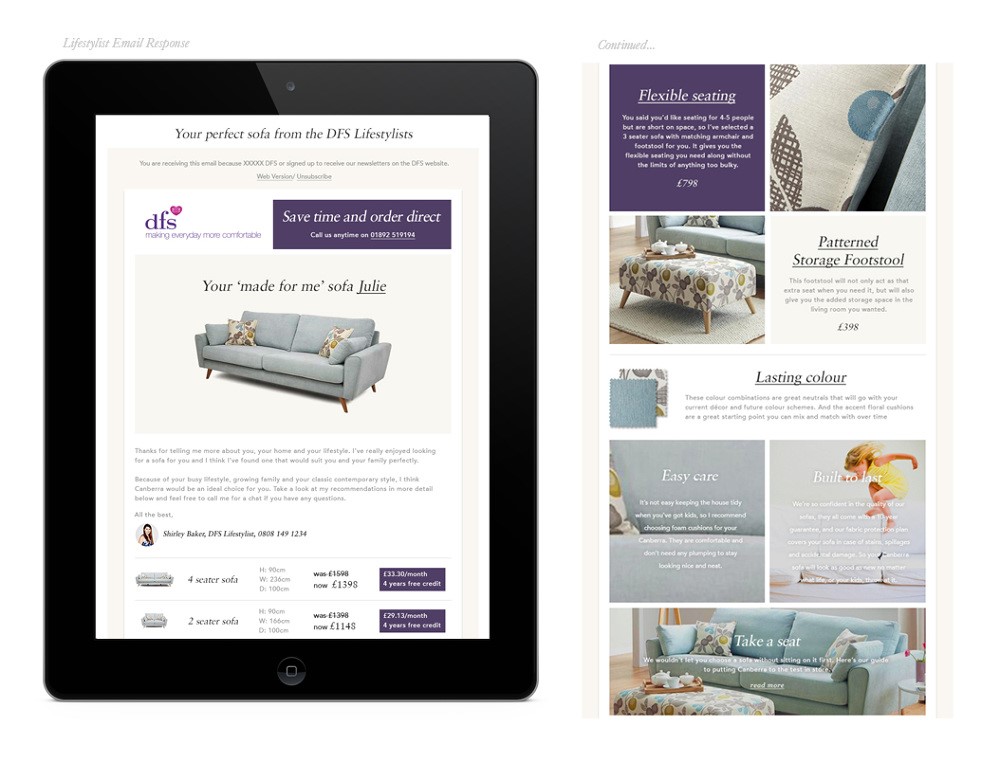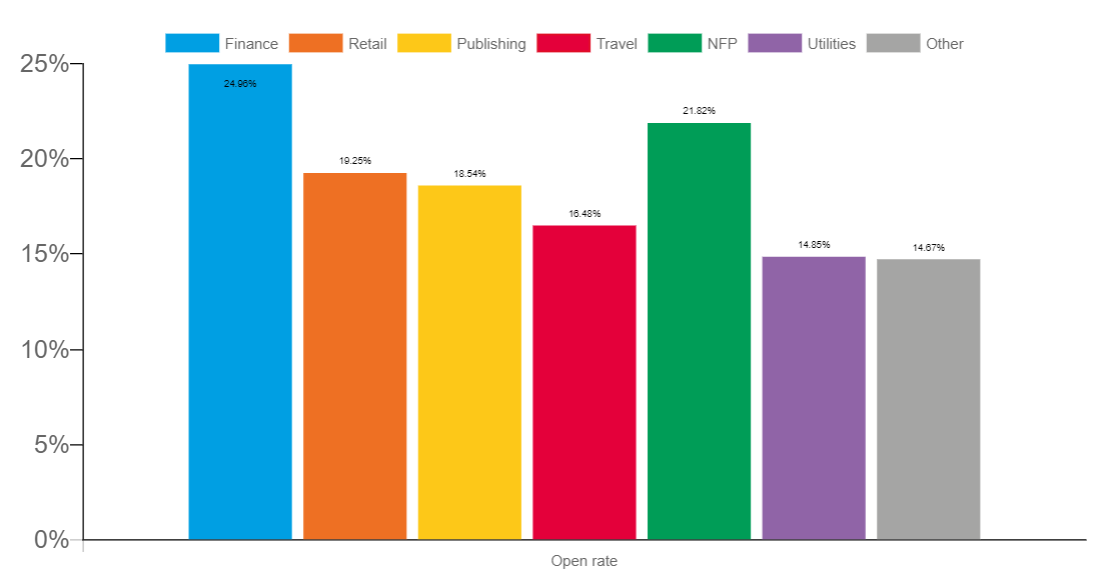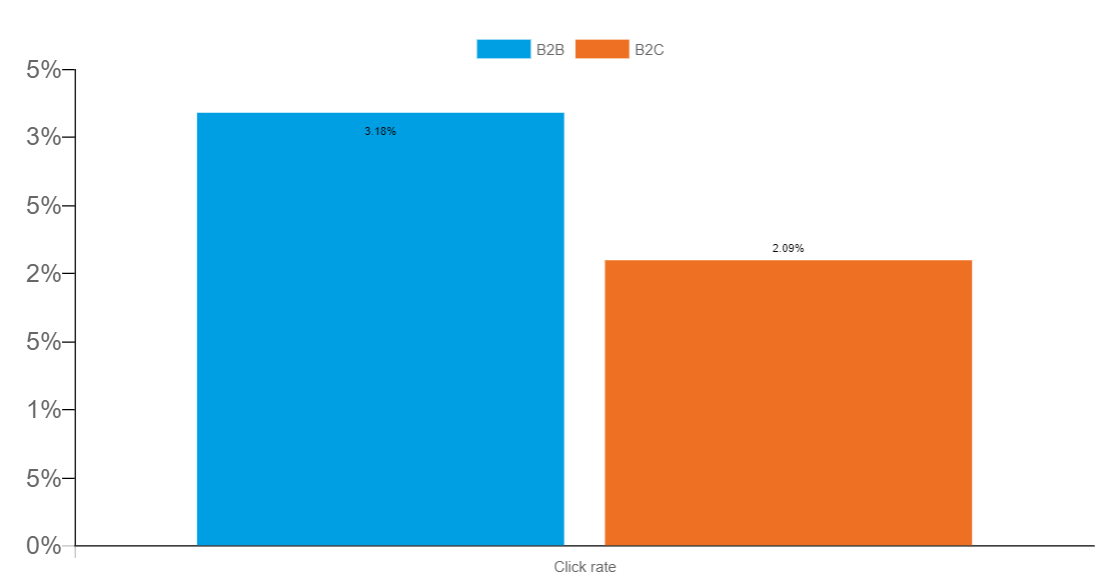Your stats will tell you whether your audience is really getting what they want out of your email programme, the latest figures from the DMA show that the average click-through rate in the UK is 1.9% - how do yours compare? This will give you an indication of how your audience feels about your emails. It’s different one industry to another, but the utilities industry in the lead at 3.44% percent.
A good email content strategy can really help to engage your audience and make them feel valued, who doesn’t want that? And the investment in email is well worth it, according to the DMA’s Marketer Email tracker report which shows that the average email address achieves £32.28 return on every pound spent, putting email ahead of any other channel in the ROI stakes. The Drum have calculated that every email address is worth £84.50, so have no doubts that your email audience is worth some investment in reducing your churn and increasing engagement.
If you want to increase your conversion rate or your revenue generation, you need to keep your audience engaged with your emails. You can start with meeting or even exceeding your audience’s expectations by thinking about why your customers buy your brand or product, give them content that is connected to their relationship with you AND adds some value to their life.
If they love your brand, give them the inside scoop on what you are up to, introduce them to the creative people and processes behind the brand, whether that’s chefs, designers, growers. Capture the passion behind the scenes and share it with your audience.
If your customers like to look good, help them. Include seasonal style tips, how to care for their clothes, tips from style gurus; to name just a few opportunities.
If you are a charity, think about what motivates your audience to care about your cause. Feed their enthusiasm. Not by constantly asking for money but by sharing positive developments and successes – the real world challenges you are struggling to solve. Find behind the scenes stories to explain the work your scientists or case workers do. Share what supporters can do to help, that doesn’t involve giving you money.
For business-to-business (B2B), what problem does your product or service solve? Include interesting ways people use your product. Not in a salesy way, more interesting snippets of information.
So, what this boils down to, is that content should fulfil the needs of the customer. I’ll say that again: your email content should meet the needs of the customer.
Email award winners DFS did a great job with meeting their customer’s needs after seeking to solve the barriers that their customers were facing when buying a sofa. DFS sales people started sending an email will all the information customers needed about the sofa they were interested in, including pictures, measurements and guarantees. This resulted in an increase in open rates from 10% to 76% and as a result the average order value increased by 27%.

Photo from https://www.joandemma.com/
One of the biggest hurdles is that we have targets to meet and often have managers breathing down our necks, telling you to get another quick email out the door to meet the month’s targets. Find a way to manage their expectations and focus on fulfilling your customer’s expectations.
You may be making short term gains by pushing out a less than delightful email to a less than ideal segment of your audience. But you are most likely increasing churn and reducing the value of your audience to your brand.
Open rates are currently an average of 18.1% – that’s 81.9% of people who are not engaging with our emails. (The DMA Email Tracker Report)
The DMA’s benchmarking report – Open rate by industry

Start delighting your audience by giving them something they want, and the knock on effect over a month or two will see your open rates flourish to well above average. Go ahead and calculate just how much it may be costing you based on the DMA’s ROI rates or the Drum’s value of an email address.
Of course your ultimate goal is conversion, but to get there, your audience need to make the decision to look at your email and click through to your website.
Utilities are on average receiving a CTR approximately a third higher than other industries, their emails are focused around serving the individual needs of their audience. They are doing this by sending out billing and payment information or customer service surveys, this is the information we want from our utility suppliers. What do your audience want to receive from you?
Everyone says single call to action emails work best, will this extra content distract from conversions?
Keep your email’s message focused and don’t muddle with too many pieces of information. Value added content should not detract from the email’s main message. Be clear. Build a section lower down your email where your customer can find content, which should always be an experience or piece of information that interests them.
Using this strategy means that even if they don’t want to buy or donate now, you increase the chance of these things happening next time. Due to the fact that they will keep opening your emails, and keep finding you relevant to them.
The DMA’s benchmarking report – Click Through Rate by B2B and B2C
What do the stats say?
I used this strategy and increased the average click through rates for a charity by 53% over the space of a year.
There is no golden bullet, and you have to test, the style of template and content that works for your audience. If you find the right balance and test as you go, it can be done without an initial drop in revenue, and you should see your engagement and conversions start to grow over a month or so.
Test your theory on how best to appeal to your audience before rolling out.
Would the same content work for all of your customers?
Never say never, but my experience is that the more you can tailor content to the individual, the better the return. It may be that the supporting image is all that needs to change. Maybe splitting your audience into three main motivators and create a content journey relating to these for them.
If you have large enough audiences and the right technology, why not use buying patterns and behaviour to inform the content you serve.
To learn more, consider the IDM Award in Email Marketing, and for more key email metrics see the DMA Email Benchmarking Report 2018.
Did you find this blog useful?
At the IDM we are passionate about educating marketers and providing resources to help advance your career.
If you are interested in enhancing your CV and upskilling, browse through our wider range of marketing courses and qualifications; from one-day short courses to post-graduate diplomas.
Our learning and development team will be happy to advise based on your needs and requirements.

